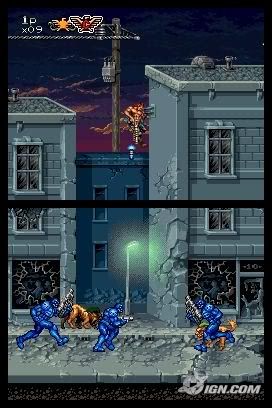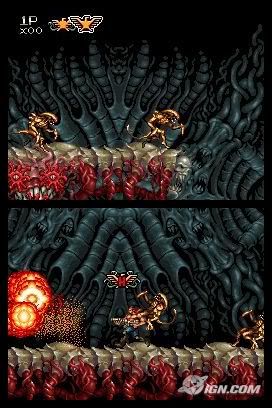But like any broad category of songs, there are good ones and bad ones. And because Christmas songs are some of the most covered songs of all time, surpassing even The Beatles' catalogue, there are good and bad versions of just about all of them. So I have taken it upon myself to apply criticism to a vast but rarely evaluated sector of music. And no, I do not guarantee that all of this criticism is constructive.
- I'm going to start with the fundamentals: music that should be part of your Christmas tradition if it isn't already. Michael W. Smith's "Christmas" is pretty much the best Christmas music ever. The album is a symphonic classical pop suite unlike anything else out there, and it's hard to imagine it being improved upon even though it uses some cheesy late-'80s synth, which is no small feat. This is not to be confused with his later "Christmastime". It's a respectable effort that doesn't attempt to duplicate the previous album's strengths, and it does have some great orchestral tracks, but it's still pretty hard to stomach his cartoony renditions of "Jingle Bells" and "Frosty the Snowman". I know he was going for something different, but after the classy and magnificent "Christmas", it just kind of eats your soul a little.
- Vince Guaraldi's Charlie Brown Christmas soundtrack is also great, but I can't think of anything interesting to say about it.
- Buy the Trans-Siberian Orchestra's trilogy of Christmas CDs. Then rip them to your computer and delete all the tracks with singing in them. You'll end up with approximately 80 minutes of great rock arrangements of Christmas songs, and 0 minutes of melodramatic power ballads about homeless children on street corners in front of city bars. Then burn that to a CD. Sounds oddly specific, you say? Well, that's because I did it. And it's the best Trans-Siberian Orchestra album ever!
- If you're in the process of caroling and you decide to sing "The First Noel", watch out for verses 2-4. It's like a hedge maze, made out of syllables instead of hedges.
- "O Holy Night" kicks butt. Always has, always will. But not when Celine Dion sings it. Who knew that the word "Noel" could be pronounced "Noahrrael"? And who allowed Celine Dion to get anywhere near one of our most cherished songs? Isn't that what the Canadian border is for? While I'm at it, I should probably give Josh Groban a mention. Actually, you can replace that last word with "savage beating", but let's take this one step at a time.
- Josh Groban is the most boring and completely interchangeable singer of the century. He's the 22-year-old pop star who sings like a 72-year-old pastor. The fact that he's popular with anyone other than aging grandmothers with hearing aids baffles me. I don't think I'd enjoy Josh Groban even if you sawed my ears off, stuck tubes in the blood-caked holes, and literally pumped concentrated Alzheimer's Disease into my brain for a week so that I'd forget what good music sounded like. The worst part is that he also did a song on the Polar Express soundtrack (which I guess is appropriate, because like the characters in that movie, he's an emotionless approximation of an actual human being.) But he gets double duty on Christmas radio because of this. I hope the next person who raises him up so he can stand on a mountain runs away while he isn't looking.
- While I'm feeling cheery, let's talk about "Christmas Shoes". "Christmas Shoes" is a conglomerate of every horrible Christmas pop ballad trope you can name. Let's run through the checklist:
 It's a story told in song form. Not every song has to be poetry, but basic narrative prose like this is rarely a good sign. After a while it just starts to sound silly, because the singer is describing mundane actions while trying to make it sound melodic and emotional. "So I reached into my pocket, and I found a few coins, blah blah blah..." See "Trapped In The Closet" for the ultimate example.
It's a story told in song form. Not every song has to be poetry, but basic narrative prose like this is rarely a good sign. After a while it just starts to sound silly, because the singer is describing mundane actions while trying to make it sound melodic and emotional. "So I reached into my pocket, and I found a few coins, blah blah blah..." See "Trapped In The Closet" for the ultimate example. It's about helping poverty-stricken children. This is a noble cause that you should should probably be donating more money to than you currently do, but let's be honest, there's really nothing compelling about the idea of some dude giving a kid money. It's a nice message that always makes for boring music. See also "Do They Know It's Christmas?"
It's about helping poverty-stricken children. This is a noble cause that you should should probably be donating more money to than you currently do, but let's be honest, there's really nothing compelling about the idea of some dude giving a kid money. It's a nice message that always makes for boring music. See also "Do They Know It's Christmas?" In similarly manipulative fashion, the child in the narrative is a stereotypical stock character, a picture of absolute purity and innocence. Again, not compelling. Naturally, he calls his mother "Mama". I know a song doesn't have time to dive into moral and emotional complexity, especially when it comes to a child, but this is just insultingly clichéd.
In similarly manipulative fashion, the child in the narrative is a stereotypical stock character, a picture of absolute purity and innocence. Again, not compelling. Naturally, he calls his mother "Mama". I know a song doesn't have time to dive into moral and emotional complexity, especially when it comes to a child, but this is just insultingly clichéd. It just keeps getting worse: after the song's middle section, a children's choir repeats the chorus. I don't think I need to elaborate on this. You've heard it a million times, and you know you hate it.
It just keeps getting worse: after the song's middle section, a children's choir repeats the chorus. I don't think I need to elaborate on this. You've heard it a million times, and you know you hate it. After THAT, a sole child sings the last line of the song, while the same electric piano that's been in every pop ballad since 1985 plays the last few notes in a slowing tempo, then pauses, and then hits the final note.
After THAT, a sole child sings the last line of the song, while the same electric piano that's been in every pop ballad since 1985 plays the last few notes in a slowing tempo, then pauses, and then hits the final note.
If I've left out any clichés, don't worry: they're there.
I'm not so jaded that I wouldn't be at least slightly moved by this story if somebody related it as an anecdote, but as a song, it fails. - If you ever read the line "the fire is slowly dying" out of context, would you assume it's a Christmas song or a death metal song?
- Trivia time! There are actually three versions of "Have Yourself A Merry Little Christmas": the benign, cheerful modern version, the bittersweet version heard in the film "Meet Me In St. Louis", and the surprisingly dark version that never made it past the writing stage. I won't give all the details here -- that's what Wikipedia is for -- but just know that the first line of the original version was "Have yourself a merry little Christmas; it may be your last." Yikes.
- "Blue Christmas" is nothing more than a random Elvis song with the word "Christmas" in it. I'm just sayin'. It's still probably better than "Jingle Bell Rock", though. I mean, jingle-horse? Really? That makes about as much sense as Santa Claus coming down Santa Claus Lane. Who cares about Santa driving down ONE street? A street that I can only assume is located at the North Pole? I thought the fact that he goes around the entire world was the thing people are supposed to get excited about. Christmas songs don't have to make sense, but I don't understand how some of these things even made past the stream-of-consciousness stage.
- And can we stop it with "River" already? This song seems to have picked up steam in recent years, with more radio play and cover versions than ever before. If the name isn't familiar to you, this is that song that features the confusing repeated line "I wish I had a river I could skate away on." The song isn't so terrible in and of itself, but come on, does EVERY song that's even tangentially related to Christmas have to be covered by a million artists and played over and over on the radio from November to December? This song is not a Christmas classic. Just accept it.
- And lastly, I'd like to be serious for a moment: There's an issue that affects thousands of people across the nation, especially during this time of year. We can no longer turn a blind eye. And with your help, I would like to pass a Constitutional amendment to change the name of "The Christmas Song" to "Chestnuts Roasting On An Open Fire". Or, at the very least, "Chestnuts (Roasting On An Open Fire)". For too long this song has attempted to present itself as the official anthem of the season. It isn't. There's nothing special about it. So please... let us never refer to this song as "The Christmas Song" again.
Merry Christmas.


















